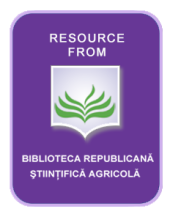/ library resources
Showing items 1 through 9 of 560.Agriculture is one of the driving forces that shaped the image of Republic of
In parts of the northern hemisphere, many pollinator species are in decline, with potential adverse implications for pollination and the ecosystem service of food production.
Cover crops are considered to be beneficial for multiple ecosystem services, and they have been widely promoted through the Common Agricultural Policy (CAP) in the EU and Farm Bill Conservation Title Programs, such as the Environmental Quality Incentives Program (EQIP), in the USA.
Agroforestry, relative to conventional agriculture, contributes significantly to carbon sequestration, increases a range of regulating ecosystem services, and enhances biodiversity.
The dilemma between preserving farmland and urbanization has attracted many policymakers’ attention. One sound solution that has been practiced in several developed countries is the “transfer of development rights” (TDR).
Globally, farmland abandonment has been a major phenomenon for eco-environmental and social landscape changes in the mountain regions.
The restoration of vegetation in abandoned farmlands is an effective approach to control soil erosion on the Chinese Loess Plateau. However, few studies have investigated the effect of natural restoration age on the infiltration patterns and preferential flow in soil layers.
Farmland ownership fragmentation is one of the important drivers of land-use changes. It is a process that in its extreme form can essentially limit land management sustainability.
Gender equality is a key to eliminating poverty and hunger, as it has been demonstrated by the FAO throughout its research worldwide.
Pagination
Land Library Search
Through our robust search engine, you can search for any item of the over 73,000 highly curated resources in the Land Library.
If you would like to find an overview of what is possible, feel free to peruse the Search Guide.





